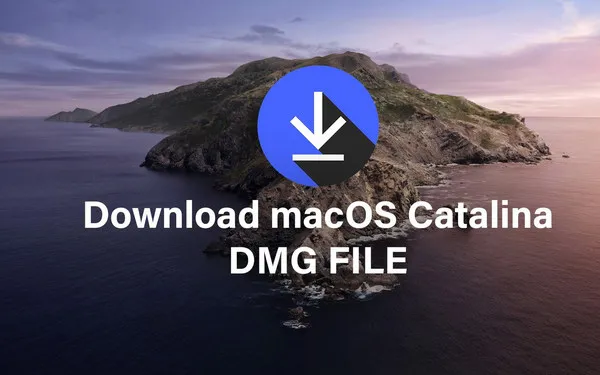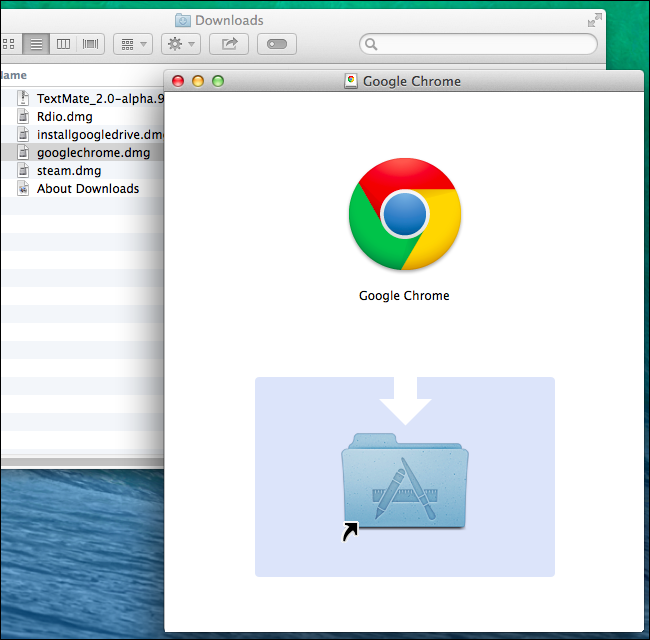How Install A Downloaded Dmg On A Mac
Docker Desktop for Mac is the Community version of Docker for Mac.You can download Docker Desktop for Mac from Docker Hub.
Sep 21, 2007 How to Install Software from DMG Files on a Mac. 21 September, 2007 by Tom Harrison in mac os x. A.DMG file is a container file commonly used to distribute applications for Mac OS X. Installing software from one of these requires you to mount the image and move its contents to your computer’s “Applications” directory.
- DMG is short for disk image, a format which is commonly used in OS X to install a software. Another possibility is to use packges (.pkg ) which are installed using the OS X Installer. DMG Images are like customizable folders that cannot only contain the application itself but also other files.
- Here we’ll help with installing and download macOS Catalina DMG file. Related: Download macOS Catalina ISO, DMG, VMDK – All In One; Since Catalina is still in the process of completion and a little buggy, it’ll end up on the App Store soon. If you’ve a Mac specifically a.
By downloading Docker Desktop, you agree to the terms of the Docker Software End User License Agreement and the Docker Data Processing Agreement.
What to know before you install
README FIRST for Docker Toolbox and Docker Machine users
If you are already running Docker on your machine, first readDocker Desktop for Mac vs. Docker Toolbox to understand theimpact of this installation on your existing setup, how to set your environmentfor Docker Desktop on Mac, and how the two products can coexist.
Relationship to Docker Machine: Installing Docker Desktop on Mac does not affect machines you created with Docker Machine. You have the option to copy containers and images from your local default machine (if one exists) to the Docker Desktop HyperKit VM. Whenyou are running Docker Desktop, you do not need Docker Machine nodes running locally (or anywhere else). With Docker Desktop, you have a new, nativevirtualization system running (HyperKit) which takes the place of theVirtualBox system. To learn more, see Docker Desktop for Mac vs. Docker Toolbox.
System requirements
Your Mac must meet the following requirements to successfully install Docker Desktop:
Mac hardware must be a 2010 or a newer model, with Intel’s hardware support for memory management unit (MMU) virtualization, including Extended Page Tables (EPT) and Unrestricted Mode. You can check to see if your machine has this support by running the following command in a terminal:
sysctl kern.hv_supportIf your Mac supports the Hypervisor framework, the command prints
kern.hv_support: 1.macOS must be version 10.13 or newer. That is, Catalina, Mojave, or High Sierra. We recommend upgrading to the latest version of macOS.
If you experience any issues after upgrading your macOS to version 10.15, you must install the latest version of Docker Desktop to be compatible with this version of macOS.
Note: Docker supports Docker Desktop on the most recent versions of macOS. That is, the current release of macOS and the previous two releases. Docker Desktop currently supports macOS Catalina, macOS Mojave, and macOS High Sierra.
As new major versions of macOS are made generally available, Docker stops supporting the oldest version and support the newest version of macOS (in addition to the previous two releases).
At least 4 GB of RAM.
VirtualBox prior to version 4.3.30 must not be installed as it is not compatible with Docker Desktop.
Install Dmg File
What’s included in the installer
The Docker Desktop installation includes Docker Engine, Docker CLI client, Docker Compose, Notary, Kubernetes, and Credential Helper.
Five years have passed since the Second Catastrophe, which eclipsed the events of April 1986. The zone is tormented by increased emissions, displacing abnormal fields and opening roads to previously inaccessible places. Clear 1.1.6 dmg free. Do the system check in the “Evaluate” stage. Try any recommendations in its “Please Fix” section. If you run into any problems, please just ask a clear question on the Message Board. To open a text file, you can type open-t FILENAME.For example, to open the bash “rc” file.
How Install A Downloaded Dmg On A Mac Os
Install and run Docker Desktop on Mac
Double-click
Docker.dmgto open the installer, then drag the Docker icon to the Applications folder.Double-click
Docker.appin the Applications folder to start Docker. (In the example below, the Applications folder is in “grid” view mode.)You are prompted to authorize
Docker.appwith your system password after you launch it. Privileged access is needed to install networking components and links to the Docker apps.The Docker menu in the top status bar indicates that Docker Desktop is running, and accessible from a terminal.
If you just installed the app, you also get a message with suggested next steps and a link to the documentation. Click the Docker menu () in the status bar to dismiss this pop-up notification.
Click the Docker menu () to seePreferences and other options.
Select About Docker to verify that you have the latest version.
Congratulations! You are now successfully running Docker Desktop.
Uninstall Docker Desktop
To unistall Docker Desktop from your Mac:

- From the Docker menu, select Troubleshoot and then select Uninstall.
- Click Uninstall to confirm your selection.
Note: Uninstalling Docker Desktop will destroy Docker containers and images local to the machine and remove the files generated by the application.
Switch between Stable and Edge versions
Docker Desktop allows you to switch between Stable and Edge releases. However, you can only have one version of Docker Desktop installed at a time. Switching between Stable and Edge versions can destabilize your development environment, particularly in cases where you switch from a newer (Edge) channel to an older (Stable) channel.
For example, containers created with a newer Edge version of Docker Desktop maynot work after you switch back to Stable because they may have been createdusing Edge features that aren’t in Stable yet. Keep this in mind asyou create and work with Edge containers, perhaps in the spirit of a playgroundspace where you are prepared to troubleshoot or start over.
To safely switch between Edge and Stable versions, ensure you save images and export the containers you need, then uninstall the current version before installing another. For more information, see the section Save and Restore data below.
Save and restore data
You can use the following procedure to save and restore images and container data. For example, if you want to switch between Edge and Stable, or to reset your VM disk:
Use
docker save -o images.tar image1 [image2 ..]to save any images you want to keep. See save in the Docker Engine command line reference.Use
docker export -o myContainner1.tar container1to export containers you want to keep. See export in the Docker Engine command line reference.Uninstall the current version of Docker Desktop and install a different version (Stable or Edge), or reset your VM disk.
Use
docker load -i images.tarto reload previously saved images. See load in the Docker Engine.Use
docker import -i myContainer1.tarto create a filesystem image corresponding to the previously exported containers. See import in the Docker Engine.
For information on how to back up and restore data volumes, see Backup, restore, or migrate data volumes.
Where to go next
- Getting started provides an overview of Docker Desktop on Mac, basic Docker command examples, how to get help or give feedback, and links to other topics about Docker Desktop on Mac.
- Troubleshooting describes common problems, workarounds, howto run and submit diagnostics, and submit issues.
- FAQs provide answers to frequently asked questions.
- Release notes lists component updates, new features, andimprovements associated with Stable releases. For information about Edge releases, see Edge releasenotes.
- Get started with Docker provides a general Docker tutorial.
 mac, install, download, run, docker, local
mac, install, download, run, docker, local